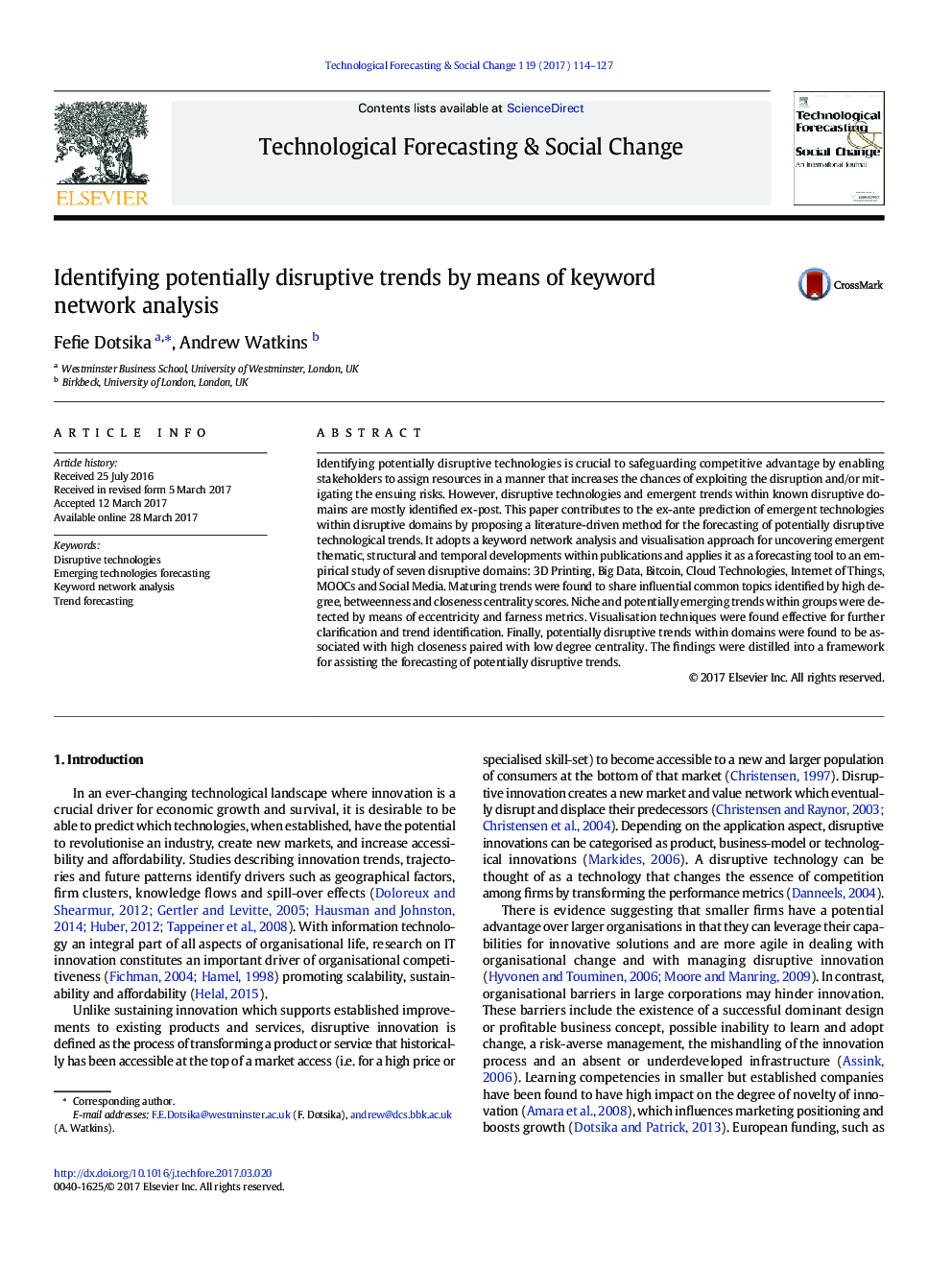| Article ID | Journal | Published Year | Pages | File Type |
|---|---|---|---|---|
| 5036934 | Technological Forecasting and Social Change | 2017 | 14 Pages |
â¢Network analysis framework for forecasting emerging, potentially disruptive trendsâ¢Eccentricity and farness metrics are associated with niche and emerging trends.â¢High closeness with low degree centrality highlights potentially disruptive trends.â¢Visualisation, meaningful for small data sets, reinforces evidence of emergence.
Identifying potentially disruptive technologies is crucial to safeguarding competitive advantage by enabling stakeholders to assign resources in a manner that increases the chances of exploiting the disruption and/or mitigating the ensuing risks. However, disruptive technologies and emergent trends within known disruptive domains are mostly identified ex-post. This paper contributes to the ex-ante prediction of emergent technologies within disruptive domains by proposing a literature-driven method for the forecasting of potentially disruptive technological trends. It adopts a keyword network analysis and visualisation approach for uncovering emergent thematic, structural and temporal developments within publications and applies it as a forecasting tool to an empirical study of seven disruptive domains: 3D Printing, Big Data, Bitcoin, Cloud Technologies, Internet of Things, MOOCs and Social Media. Maturing trends were found to share influential common topics identified by high degree, betweenness and closeness centrality scores. Niche and potentially emerging trends within groups were detected by means of eccentricity and farness metrics. Visualisation techniques were found effective for further clarification and trend identification. Finally, potentially disruptive trends within domains were found to be associated with high closeness paired with low degree centrality. The findings were distilled into a framework for assisting the forecasting of potentially disruptive trends.
